Mutual Inductance
1. Introduction to Mutual Inductance
Mutual coupling between coils exists when one coil is in the magnetic field created by another coil.
When a varying current
- A varying flux
is produced in the same coil - This produces a back EMF in the primary coil
- Part of this flux links with a second coil, inducing an EMF
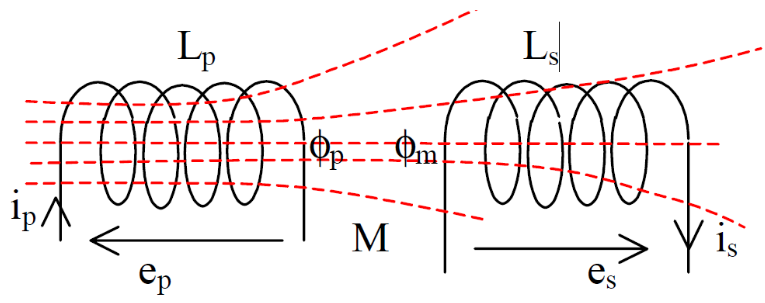
2. Magnetic Field Fundamentals
2.1 Magnetic Flux and Flux Density
The magnetic flux passing through a surface area A:
Where:
= magnetic flux density = differential area element
2.2 Magnetic Field Intensity and Ampère’s Law
Relationship between magnetic field intensity and flux density:
Where:
= permeability of the medium = magnetic field intensity
Ampère’s Law:
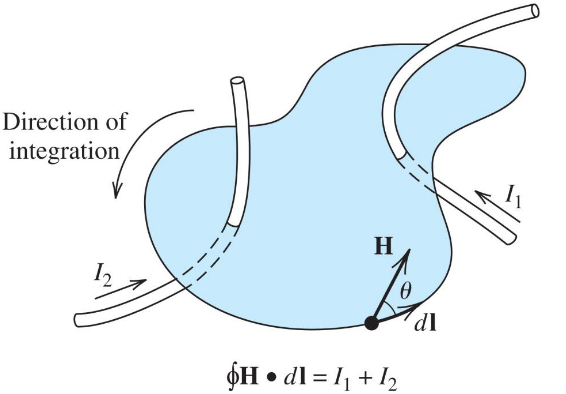
2.3 Magnetomotive Force and Reluctance
Magnetomotive Force (MMF) of an N-turn coil:
Reluctance of a magnetic path:
Magnetic Circuit Analogy:
(Similar to Ohm’s law:
3. Mutual Inductance Theory
3.1 Basic Concept
When current
- Primary flux:
- Flux linking secondary:
- Coefficient of coupling:
Since
Therefore:
Where
3.2 Mathematical Definition
Important:
3.3 Mutual Inductance in Terms of Dimensions
For coupled coils with a common magnetic path:
Where
4. Worked Example: Toroidal Coil
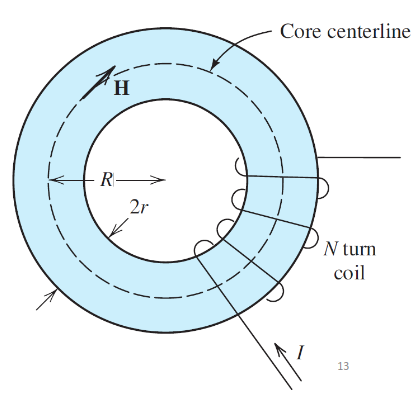
Given: Toroidal coil with N turns, current I, core permeability μ
Find: Magnetic flux density B, total flux φ, flux linkages λ, reluctance ℛ
Solution:
Using Ampère’s law on the center line:
Total flux:
Flux linkages:
Reluctance:
5. Dot Notation Convention

5.1 Rules for Dot Notation
Case 1: Both currents enter dotted terminals (or both leave)
- Fields aid each other
- Mutual inductance term has same sign as self-inductance term
Case 2: One current enters dotted terminal, other leaves
- Fields oppose each other
- Mutual inductance term has opposite sign to self-inductance term
5.2 Voltage Equations with Dot Notation
For two coupled coils:
Aiding fluxes (+M):
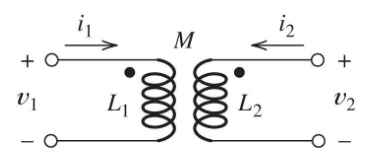
Opposing fluxes (-M):

6. Energy in Mutually Coupled Coils
The total energy stored in two mutually coupled coils:
Aiding fluxes:
Opposing fluxes:
General form:
7. Worked Examples
Example 1: Mutual Inductance Calculation
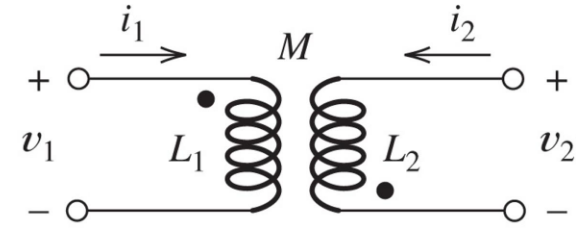
Given:
H, H, H A, A
Find:
Solution:
Example 2: Toroidal Core with Two Coils
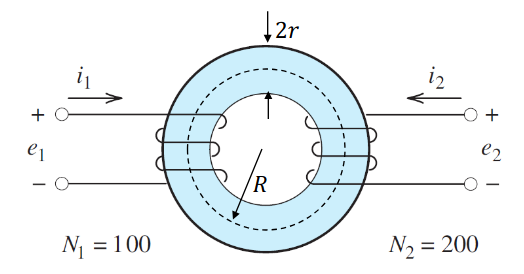
Given:
- Two coils on toroidal core
- Core reluctance:
(AT)/Wb turns, turns
Find: Self-inductances and mutual inductance
Solution:
Self-inductances:
Mutual inductance:
8. Equivalent Circuits for Coupled Coils
8.1 T-Equivalent Circuit
For coupled coils, we can create an equivalent T-circuit:
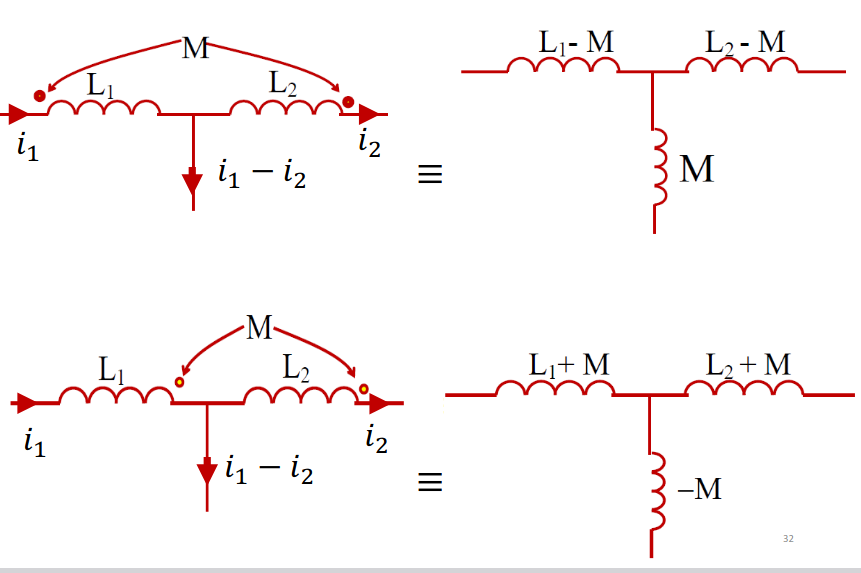
This equivalent circuit eliminates mutual coupling while maintaining the same terminal behavior.
9. Key Relationships Summary
| Parameter | Formula | Units |
|---|---|---|
| Mutual Inductance | H | |
| Self Inductance | H | |
| Reluctance | AT/Wb | |
| MMF | AT | |
| Flux | Wb |
10. Important Notes
- Reciprocity:
- Coupling Coefficient:
- Perfect Coupling:
(all flux links both coils) - Energy Consideration: Total energy must be positive for passive circuits
- Sign Convention: Always use dot notation to determine correct signs